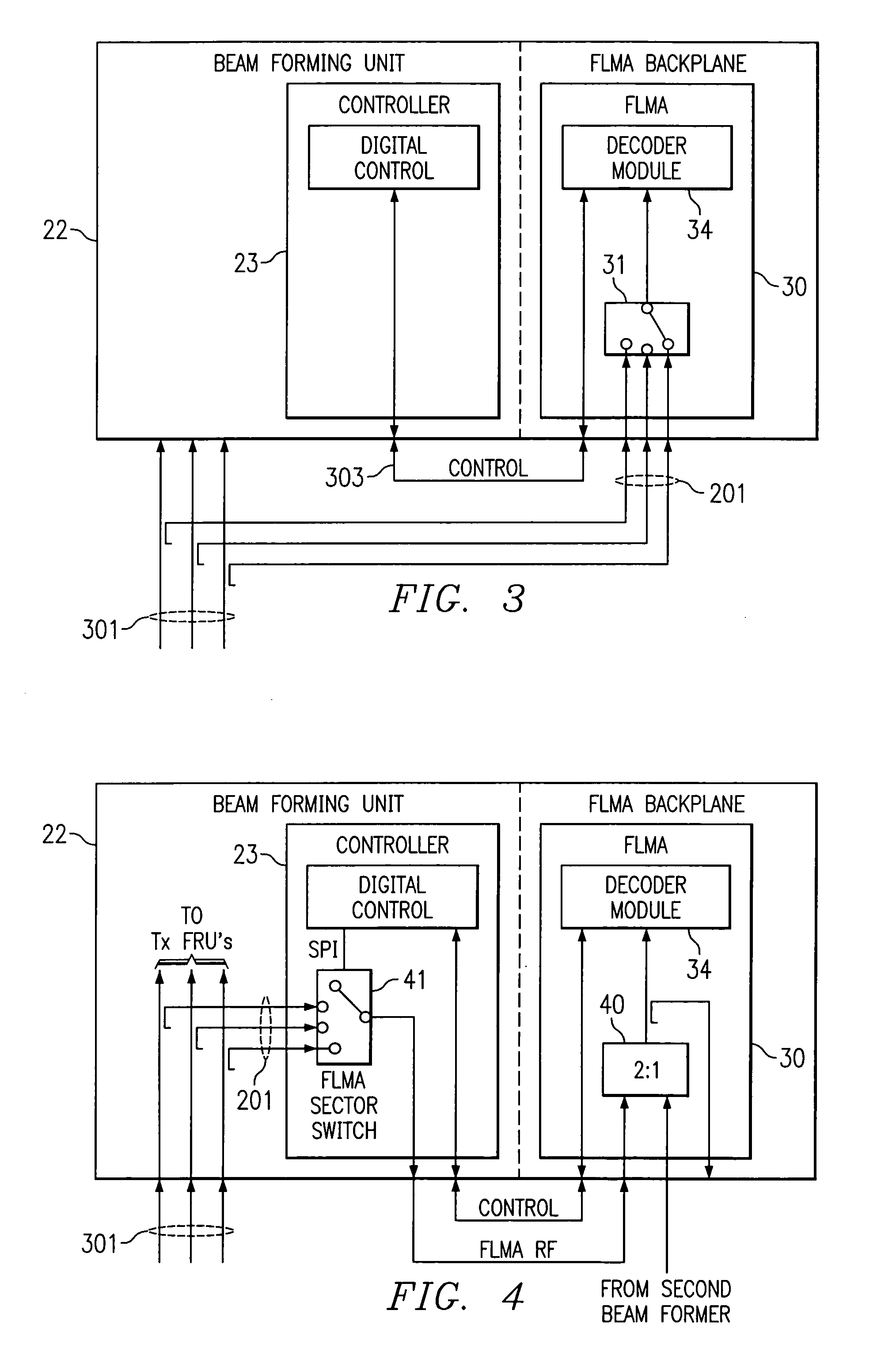System and method for dynamically adjusting cell sectorization
- Summary
- Abstract
- Description
- Claims
- Application Information
AI Technical Summary
Benefits of technology
Problems solved by technology
Method used
Image
Examples
Embodiment Construction
[0022]FIG. 1 illustrates three cells of a typical fixed sectorization scheme as found in prior art cellular communication systems. System 10 is divided into three individual cells 100–102. Each cell is further divided into three sectors. As is typical in the prior art, θ represents the angle defining the sectorization of the entire cell and network. Cells 100–102 each are sectorized into equal sectors each covering 120° (i.e., θ=120°). The sectors of the prior art systems generally remain fixed regardless of changing environmental or sector load conditions.
[0023]FIG. 2 illustrates a preferred embodiment of the present invention.
[0024]Communication system 20, such as may comprise cellular base transceiver station (BTS) radios 21 having three sector outputs, alpha (α), beta (β), and gamma (γ), which are input to sector beam former 22. Sector beam former 22 of the illustrated embodiment includes controller 23 and forward link monitoring assembly (FLMA) unit 30. Controller 23 may typica...
PUM
 Login to View More
Login to View More Abstract
Description
Claims
Application Information
 Login to View More
Login to View More - R&D
- Intellectual Property
- Life Sciences
- Materials
- Tech Scout
- Unparalleled Data Quality
- Higher Quality Content
- 60% Fewer Hallucinations
Browse by: Latest US Patents, China's latest patents, Technical Efficacy Thesaurus, Application Domain, Technology Topic, Popular Technical Reports.
© 2025 PatSnap. All rights reserved.Legal|Privacy policy|Modern Slavery Act Transparency Statement|Sitemap|About US| Contact US: help@patsnap.com



